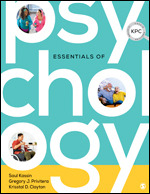You are here
Understanding Your Course Materials

Understanding Your Course Materials*
From A Guide to Student Success: Part 3
Read before class
It’s important to have a plan—and to use science to help you out. Researchers have found that certain strategies work well for learning—particularly when it comes to reading the textbook. So, use them! For starters, many students do not read before class, and they often try to start reading without any real plan for reading a textbook efficiently. Helpful tip: Read BEFORE CLASS. It will save you time and improve your grades! Research has shown that if you have no idea what the professor is going to teach about, and then you sit down and try to take notes and listen, your brain will literally put you in a “time out.” It is too much! You will have cognitive overload. So, be fair to your brain and give yourself the information you need to be able to absorb the material.
Make a plan of action
As part of your plan, figure out how to tackle your weekly reading, which is often approximately 40 pages of generally dense material. Use tools that will help you want to keep going rather than stop before you have even begun. So, make a plan of action:
- First, skim over the chapter that you are preparing to read. Whether your book is in a print format or an eBook, it’s important to get a sense of the formatting of the book such as the illustrations, applied sections, questions, summaries, and text size. If this is your first time using an eBook, spend some extra time familiarizing yourself with the basics such as how to “turn” pages and enlarge the font if needed, as well as the general format of the book. Many students prefer eBooks, but if this is your first one, it can be a very different experience for you. It may take a bit of adjusting on your part. Also, no matter the format, get familiar with the interactive elements that are often included with the book.
- When you are ready to start working on a specific chapter, consider starting at the back of the chapter. The end of the chapter will give you a clear and concise summary of the chapter. You can also review key words, which will acquaint you with what the professor is going to discuss in class.
- Read over thought questions (if any) at the end of each chapter. Obviously, you will not know the answers, but it’ll give you an idea of what is important.
- When you begin a chapter, peruse the first page. Read the chapter outline, or scan the section headings, and, if present, review the learning objectives. The learning objectives state what you should be able to accomplish when you truly learn the material. They’ll also give insight into the chapter.
- Divide your reading into reasonable portions. Researchers recommend setting a timer for 20–30 minutes (approximately 7–10 pages) to serve as a reminder to take a break. When the timer goes off, take a moment or two to stretch and move around a little. It is also recommended that you not have your phone close by or that you put it on silent mode, so that random alerts and messages won’t interrupt you and break your flow.
- Learning is not about being fast. Learning is about appropriately retaining important information. When you read those 7–10 pages, try to understand the main points, not every point. Do not take notes initially. You don’t want to break your cognitive flow. As you go back and review the pages you’ve read, notetaking can be beneficial. Research has shown that taking notes (pen-to-paper notetaking) can help students understand and retain the material better. Helpful tip: Paraphrase what the authors are saying and write it in your notes. This will help you articulate, and therefore understand, the material better. We call this approach deep processing, compared to memorizing, which is surface processing.
- It is highly recommended that you create a learning community (AKA a study group) and then discuss the chapters with that group. This will help you with deep processing, and you are more likely to remember the material. Helpful tip: If you are unsure how to go about creating a learning community, consider discussing this with your professor. Professors can make announcements in class, start an online forum for the class, or offer you and your classmates other ways to connect. Many study groups create their own Google Docs so that they can exchange notes with others or post questions. Other study groups may use social media as a way to connect. No matter how you do it, be sure to do it early in the term. The sooner you have a study support team, the better.
Next - Part 4: Best Practices for Studying and Preparing for Tests
*Sources:
Essentials of Psychology
Saul M. Kassin
Gregory J. Privitera
Krisstal D. Clayton
Psychology, Seventh Edition
James S. Nairne
Dawn M. McBride
- Guide Contents
- Tips and Tricks for Student Success: The Basics
- Getting the Most Out of Your Course
- Understanding Your Course Materials
- Best Practices for Studying and Preparing for Tests
- Creating School-Work-Family Balance
- Effective Distance Learning
- Helpful Resources to Help You Succeed
- Making the Most Out of Your Professor’s Office Hours
- Summary of Helpful Tips




